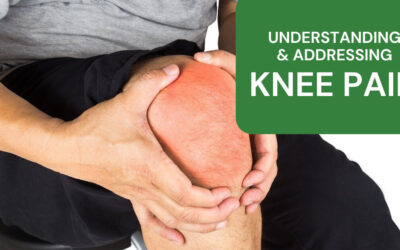Piriformis Syndrome Treatment, Symptoms and Causes
What is Piriformis Syndrome?
Piriformis Syndrome is a painful condition that affects the hips, buttocks, and legs. It is caused when the piriformis muscle—a small muscle located deep in the buttock near the top of the hip joint—becomes irritated or inflamed. This can be due to an injury, muscle overuse (especially in athletes), or simply sitting for long periods.
Common Symptoms of Piriformis Syndrome
The most common symptom associated with Piriformis Syndrome is a tingling sensation or numbness around the buttocks and down one side of your leg, similar to sciatic nerve pain. You may also feel pain in your hip or lower back when you move your leg away from your body or press on certain areas around your glutes and hip joint.
It is important to note that Piriformis Syndrome is different from sciatica. Sciatica is a medical condition caused by compression of the sciatic nerve, often due to an underlying health issue such as a herniated disc or spinal stenosis. While Piriformis Syndrome and sciatica have similar symptoms, they are not the same and should be treated differently.
Those Most at Risk for Piriformis Syndrome
Piriformis Syndrome is more prevalent among those that sit for long periods, athletes, and those that are physically active. It is important to avoid activities that aggravate the condition and get treatment from a doctor as soon as possible.
Treatments for Piriformis Syndrome
Treatments may include physical therapy, anti-inflammatory medications, injections, or surgery in severe cases. Keeping your muscles strong and flexible can help reduce the risk of Piriformis Syndrome.
It is important to note that prevention is always better than cure. One way to do this is by adjusting your sleep position. For example, sleeping on your back with a pillow beneath your knees for support will help prevent putting too much pressure on the piriformis muscles. However, if you prefer to sleep on your side, try using a pillow between your legs to keep them in line with your spine and hips. This can help reduce pressure and tension in the muscles that cause Piriformis Syndrome.
Management of Piriformis Syndrome
The best way to manage Piriformis Syndrome is through exercise. Stretches that target the piriformis muscle, such as the figure-4 stretch or internal hip rotator stretch, can help relieve pain and tension in the area. Additionally, strengthening exercises for your glutes, core, and lower back can help improve your condition. Finally, try adding activities like yoga or Pilates to your routine, which often focus on stretching and strengthening these muscles.
Here are five stretches that will improve your discomfort from piriformis syndrome:
Figure four stretch:
- Lie on your back with both feet flat on the floor
- Take your right ankle and place it over your left knee
- Grasp your left thigh and gently pull towards your chest until you feel a stretch in the piriformis muscle
- Hold for 30 seconds before switching sides
Internal Hip Rotators Stretch:
- While seated, cross your right ankle over your left knee
- Keep your back straight and lean forward until you feel a gentle stretch in your piriformis muscle
- Hold for 30 seconds before switching sides
Bridge pose:
- Lie on your back with your knees bent and feet flat on the floor
- Gently lift your hips off the ground, use your glutes to press your hips up as high as you can
- Hold this position for 30 seconds before releasing
Side leg lifts:
- Lie on your right side with your right arm supporting your head
- Gently lift the left leg up and hold for three to five seconds before lowering your leg
- Do 10 repetitions before switching sides
Clamshell:
- Lie on your right side with your hips and shoulders in line
- Bend your knees to a 45-degree angle, then lift the top knee up while keeping the feet together and the hips stacked
- Hold for five seconds before returning to starting position
- Do 10 repetitions before switching sides
By stretching and strengthening the muscles that can cause Piriformis Syndrome, you can reduce discomfort and pain while keeping your hips healthy and strong. However, if symptoms persist after trying these stretches or exercises, it is essential to seek advice from a medical professional.
Bottom Line: With proper care and management, you can effectively manage Piriformis Syndrome to continue enjoying all the activities that make life enjoyable without worrying about the pain or discomfort caused by it.
Are you tired of living with pain?
Are your activities and daily choices determined by your level of pain?
Are you ready to change your life for the better and gain back your physical freedom?
My unique and custom designed approach comes from years of training, education and experience. Together, we will get you back to living pain free and enjoying life.
Sign up for a private session today
It’s never too late to try something new.

Related Articles:
Understanding and Addressing Knee Pain
Knee Pain is a Common Ailment Knee pain is a common ailment that can significantly impact daily life, hindering mobility and causing discomfort. Understanding the causes and managing knee pain is essential for maintaining overall well-being, whether it's due to...
Meditation is the CURE
Meditation has gained recognition for having a profound effect on the mind and body, leading to improved overall health and longevity.
Movement is the CURE
Including movement into your day can be the cure to many health issues that plague us later in life. Movement has incredible benefits to overall health and helps promote longevity.



